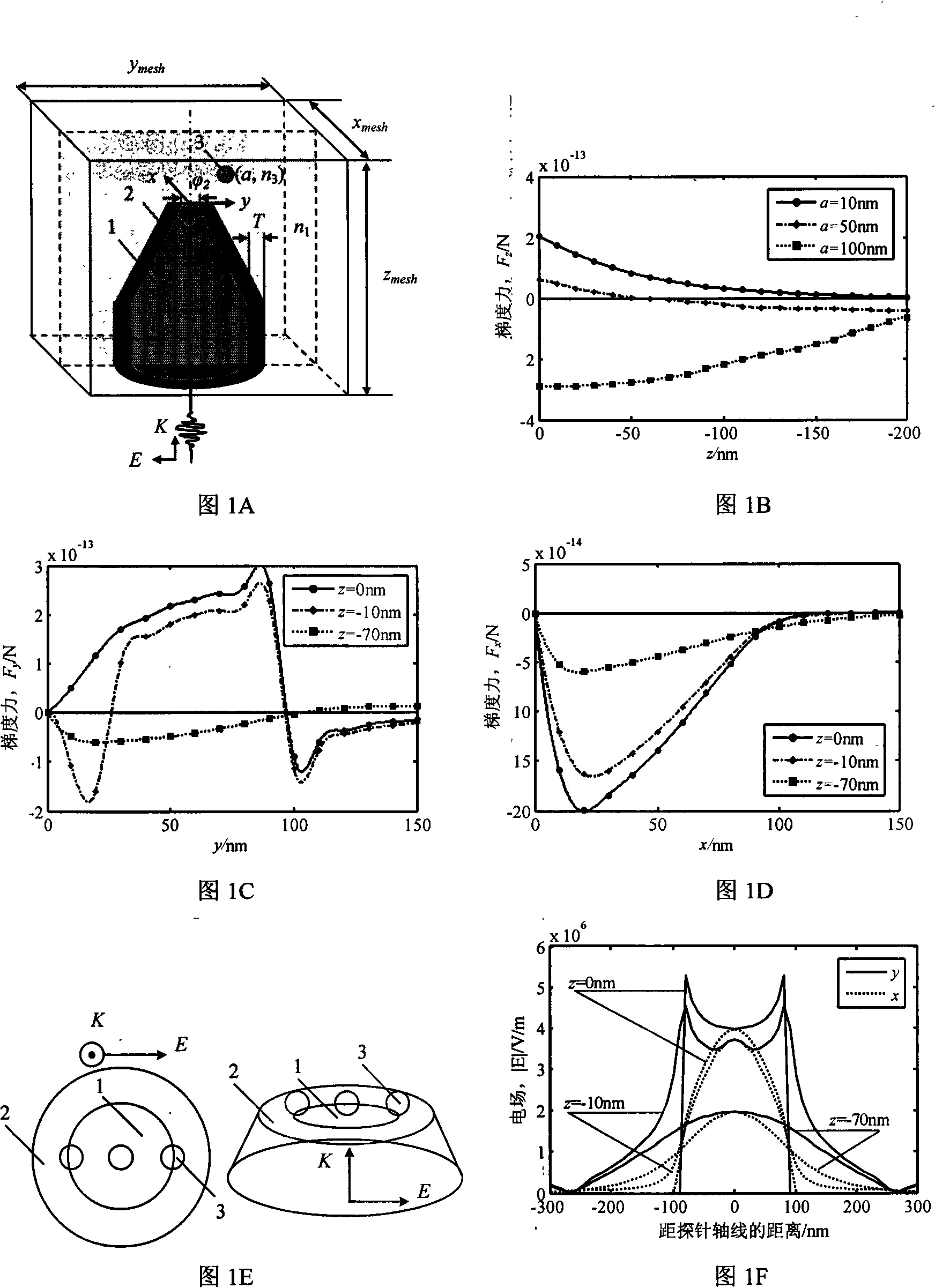A Method for Measuring Near-field Light Intensity Distribution Using the Arrangement Shape of Nanoparticles
A nanoparticle and near-field light technology, applied in the field of near-field optics and nano-operations, can solve problems such as cost increase and process complexity, and achieve the effects of low cost, simple structure, and improved research capabilities
- Summary
- Abstract
- Description
- Claims
- Application Information
AI Technical Summary
Problems solved by technology
Method used
Image
Examples
Embodiment 1
[0050] Embodiment 1: The detection of near-field distribution is realized by adopting the method of capturing nanoparticles to form an arrangement shape with an optical fiber probe.
[0051] The structure diagram of the method is as follows image 3 shown, combined with image 3 The specific steps of the near-field detection method are described in detail as follows:
[0052] After the semiconductor laser 6 is output by the polarization-maintaining pigtail 7, the flange adjustable optical attenuator 8 is added, and the power is adjusted by adjusting the driving source current and the power attenuator 8, and then the polarization direction is adjusted through the optical fiber polarization rotator 9, and then the optical fiber is split One beam of laser light is distributed from the device 10 to the fiber optic power meter 11 for power monitoring, and the other beam is connected to the single-mode near-field fiber optic probe 13 through the fiber optic adapter 12 . Considerin...
Embodiment 2
[0053] Embodiment 2: The detection of near-field distribution is realized by using the method of trapping nanoparticles in the coherent evanescent field of prism total internal reflection.
[0054] The structure of the method Figure 4 shown, combined with Figure 4 The specific steps of coherent evanescent field detection are described in detail as follows:
[0055]First, the diluted polystyrene bead 5 solution is adsorbed onto the surface of the prism 4, and a cover glass 25 is placed on top, and then the density and dispersion of the upper surface of the prism 4 are roughly selected using the coarse adjustment system of the laser scanning confocal microscope 15. Then, the micro-feeding system is used to bring the focal plane close to the polystyrene bead 5 to precisely position the single-layer nanoparticles. The linearly polarized laser beam emitted by the laser 26 passes through the beam expander lens group 27 and enters the half-wave plate 28 to adjust the polarization...
PUM
 Login to View More
Login to View More Abstract
Description
Claims
Application Information
 Login to View More
Login to View More - Generate Ideas
- Intellectual Property
- Life Sciences
- Materials
- Tech Scout
- Unparalleled Data Quality
- Higher Quality Content
- 60% Fewer Hallucinations
Browse by: Latest US Patents, China's latest patents, Technical Efficacy Thesaurus, Application Domain, Technology Topic, Popular Technical Reports.
© 2025 PatSnap. All rights reserved.Legal|Privacy policy|Modern Slavery Act Transparency Statement|Sitemap|About US| Contact US: help@patsnap.com



